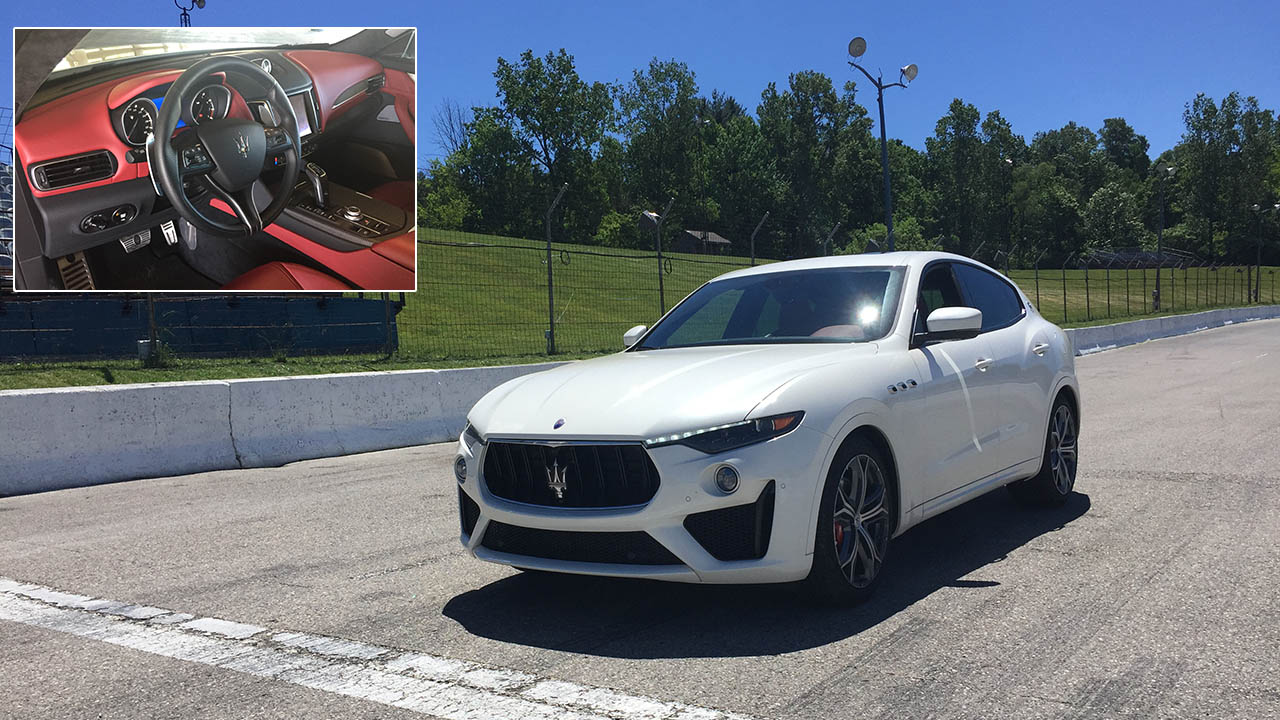Automotive Affairs - The 2019 Maserati Levante GTS: A super sport ute
 CREDIT: PROVIDED BY NAUMAN FAROOQ
CREDIT: PROVIDED BY NAUMAN FAROOQThe Levante GTS is much more than a one trick pony.
Maserati is one of the most storied brands in the business.
The company was started in 1914 by the Maserati brothers (Alfieri, Bindo, Carlo, Ettore, and Ernesto), and started building racing cars. They quickly built a reputation for speed, as Maserati racing cars scored win after win — including in the grueling Targa Florio event.
After the Second World War, the brand returned to racing, and their road cars were pretty much their racing cars. However, in 1957 Maserati started focusing on building grand tourers, and it all started with the gorgeous 3500 GT.
Since then, the company has produced many wonderful sports and touring cars, such as the Bora, Merak, Khamsin, Shamal, MC12, and many others.
While Maserati has been offering a sedan since 1963 called the Quattroporte (which literally means four doors in Italian), they had not delved into the SUV market.
That all changed with the introduction of the Levante, which first premiered in 2016. Many fans of the “Trident Star” were at first furious, that their beloved sports and racing brand would go into the sport utility vehicle market, but luxury vehicle buyers are swooping up super SUVs these days, and the Levante is among the brands best sellers since its launch.
But, how is the first ever SUV by Maserati? Read on to find out.
Styling: Beauty lies in the eye of the beholder, and to me, the Levante oozes style. Most manufacturers have done a pretty terrible job with the whole SUV-coupe segment, but not Maserati. The Levante looks aggressive (especially in the GTS trim, as tested), and sophisticated.
The public obviously agrees, as this vehicle turned heads everywhere it went. Oftentimes, I noticed people catching up to take a closer look.
They would also move out of your way, because the big front grill with the slim headlights give the Levante a very mean look, and hence cars you’re approaching simply move out of your way — most of the time anyway.
If you’re looking for a SUV that cuts an impressive impression, the Levante GTS might just be for you.
Interior: Step inside, and the first thing I noticed is that it is a lot more spacious than I had imagined. Typically, coupe-like SUVs are fairly cramped, but not the Levante. Not only is there plenty of room in the front seats, but also the rear seat passengers have very good leg and headroom, too. Plus, the seats not only look good, but they are also extremely comfortable — I could drive one all day, and not feel fatigued.
Trunk capacity might not match that of a typical box shaped SUV, but it does seem to be larger than the ones on other SUV-coupes, so in terms of space, the Levante scores big.
It also scores well in terms of equipment. It had all the gadgets you expect from your luxury vehicles these days, such as adaptive cruise control, lane keep assist, and blind spot detection.
An area it can be improved in is with its infotainment system, which was far too small for a vehicle like this, and the system often lags on initial touch. Also, the main switches such as for operating your windows, mirrors, wipers, headlights, and start/stop button come from the FCA catalogue; after all, Maserati is part of the Fiat Chrysler Automobiles group, which also includes Dodge, Ram, Jeep, and Alfa Romeo (Ferrari is technically also part of this group, but enjoys its own stock market designation).
So, the switches might not look glamorous, but they all work, and since they are mass produced items, they are far more robust than custom switchgear — which might look pretty, but not stand the test of time.
Overall, I like this interior, and would be happy to climb in and out of it every day.
Powertrain: This is where things get very interesting. While the first run of the Levante only offered a twin-turbo V6, but with the introduction of the GTS model in 2019, you get to play with a twin-turbo V8. Not just any twin-turbo V8 either, this 3.8-litre unit is actually built by Ferrari and is essentially the same engine you’ll find in the new Portofino.
In GTS trim, it produces 550 horsepower and 538 pound-feet of torque. There is an even higher spec, Trofeo, a model which takes the power output up to 590 horsepower — but trust me, 550 horsepower is more than adequate.
All this power is fed to a ZF eightspeed automatic gearbox, which will then send power to whichever wheel can make best use of it. In normal driving, the Levante GTS remains just rear-wheel drive, but in corners, and loose surfaces, it’ll balance power between the front and rear wheels, and also side to side. Be in no doubt, this is an intelligent and powerful SUV.
Performance: As you’d expect, anything with 550 horsepower would move fairly well, and it does. The sprint from 0 to 100 kilometres per hour takes just 4.2 seconds, and top speed is quoted at 292 km/h — making it among the fastest SUVs on sale today. What is truly astonishing, is that it masks its 2,170 kg curb weight really well — this SUV may not be a lightweight vehicle, but it can certainly keep up with pure sports cars.
Driving Dynamics: In its ‘Normal’ mode, the Levante GTS is like most other luxury vehicles. It is relaxed, quiet, and requires very little effort to navigate through the city. The ride comfort is much better than I was expecting, as it just glides over broken pavement, rather than crash through them.
In short, this is a vehicle you can very comfortably live with on a daily basis.
However, press the little ‘Sport’ button by the transmission selector, and activate the adjustable suspension, and it firms up, starts to growl a bit, and then, when you find the space, mash your foot into the carpet, and it feels like you’ve hit the light speed switch on the Millennium Falcon.
This is not just a Sport SUV, this is a Super SUV, and that’s not what I can say about most such vehicles.
Some might say; well, a Range Rover Sport SVR is louder (yes, it is), and a BMW X6M offers more custom drive mode options (which it does). But the Levante GTS is much more than a one trick pony, and the more I drove it, the more I liked it.
Complaints: I do wish the steering wheel was a bit smaller, the unit in the Levante GTS is HUGE.
Fuel Economy: In my test cycle, which covers 170 kilometres of highway driving + 130 kilometres of city driving, I averaged 14.1-litres/ 100 kilometres. That’s not bad for a vehicle of this size and performance, but remember, you have to feed it premium fuel.
Pricing: The 2019 Maserati Levante GTS has a base price of $138,500. My very well-equipped tester was priced at $155,540. So, it certainly isn’t cheap, but that was expected. Look at it this way, it is a bargain when compared to a Bentley Bentayga, or the Lamborghini Urus, and it’ll do pretty much anything those vehicles can do, for nearly half the outlay.
Verdict: Given Maserati’s past, I was expecting the Levante GTS to be good, but it turned out to be much better than I was expecting.
Would I buy one, if I could afford one? Yes — make mine black, please.
For additional car related content, please look up: Automotive Affairs on YouTube - youtube.com/c/automotiveaffairs and on Instagram at @automotive_affairs.















